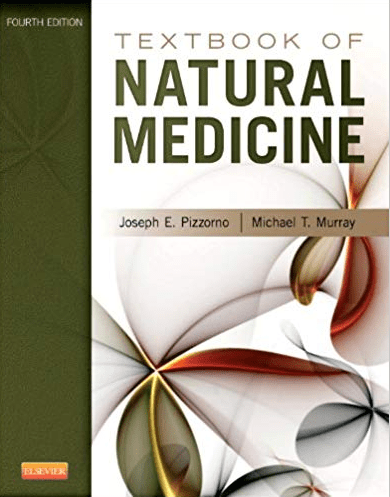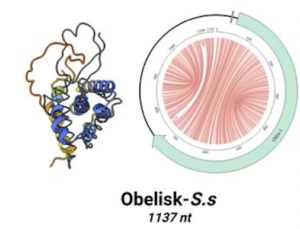“This was in ’83. At that point we were just becoming a national presence because six months before, the school became the first in the country recognized by the US Department of Education where someone could study herbal medicine homeopathy, nutrition etc, and get student loans to do it. This was a big deal.”
One of the early milestones on the long road to establishing credibility for the school—and for naturopathy at large—was the publication of https://www.elsevier.com/books/textbook-of-natural-medicine/pizzorno/978-1-4377-2333-5“>The Textbook of Natural Medicine (Churchill Livingstone), which Dr. Pizzorno co-authored with Michael Murray, ND, in 1985. The two compiled the best data then available on nutritional interventions, botanicals, and other mainstay naturopathic modalities.
 Initially it was available to Bastyr students, faculty, and a few practicing naturopaths in loose-leaf format. “We would send people updates periodically with new chapters,” Pizzorno told Holistic Primary Care.
Initially it was available to Bastyr students, faculty, and a few practicing naturopaths in loose-leaf format. “We would send people updates periodically with new chapters,” Pizzorno told Holistic Primary Care.
Though it had humble beginnings, this compendium was an important step. “For the first time we clearly documented the scientific foundation for our way of looking at patients.” In the ensuing 33 years, the Textbook of Natural Medicine has sold roughly 100,000 copies, and not just to NDs. It has become one of the basic references for the entire holistic field.
The Fight for Survival
From the get-go, Bastyr University—like the newly revived naturopathic profession—had to fight for survival, facing outright hostility from mainstream medicine. To this day, many allopathic medical groups view the entire profession as “quackery.”
The animosity reflects a deep-seated aversion within allopathic philosophy toward “vitalism”—the notion that life is more than an aggregation of biochemical reactions, but rather is a manifestation of a fundamental, intelligent, animating force. Naturopathy, like Ayurveda, Chinese medicine, and other ancient healing systems, is unapologetically vitalistic.
“Right off the bat there were people against our existence,” says Cathy Rogers, ND, who trained at NCNM in the mid-70s, and served as Bastyr’s Dean of Admissions in the early ‘80s. “The night before orientation at Bastyr, a member of the board of Seattle Community College heard from a prominent Seattleite who said they shouldn’t be hosting naturopathic medicine, and tried to shut the thing down. We had to overcome obstacles.”
The saving grace at that point came from the wife of the chancellor of the community college system, who, despite her skepticism had experienced resolution for her menopausal symptoms after consulting with a naturopath. “So the chancellor became friendlier to us,” recounted Rogers. “The only reason our medicine was able to go forward is because it helped a person in a key position.”
But the battle got even more intense once Bastyr sought formal accreditation.
“The accrediting agency initially accepted our application, but then they made a new rule saying that they couldn’t accredit any new single-degree school. So we met as a team, and I remember Weeks saying we need to go public with this,” Rogers recalled. She added that initially, she was against the whole idea.
“I wanted to nail up a proclamation for why we shouldn’t get accredited. Yes, it would enable students to have financial aid. But I was concerned that they (the mainstream accreditation board) would have more of an effect on us with regard to what we could teach. The way we survived in the past was to keep our heads down and not go public. So this was a big shift to be visible. It was a big, big fight that we ultimately won.”
While it is by no means easy for today’s naturopaths, there is far more public and collegial support than there was in the late ‘70s, says Pizzorno. He remembers some of his mentors being taken out of their offices in handcuffs, in front of their patients, “because they were teaching about diet, herbs, and other things everyone now knows are the right ways to go forward.”
Integration & Collaboration
Though the process of change is slow, there is no question that there has been a movement toward integration and collaboration between NDs and conventionally-trained MDs—especially those who practice holistic and functional medicine.
Sydney Freggiaro, a 4th year ND student at Bastyr, and recipient of the school’s 2018 Founders Award, points out that Bastyr residents are now doing rotations at Harborview Medical Center, a major Seattle-area hospital. There, they interact with MDs, and engage with patient populations that might not otherwise see a naturopath.
Friendly relations between Harborview and Bastyr trace back to 1986 when Dr. Jane Guiltinan, a clinical professor at Bastyr, was asked to sit on Harborview’s board, thus becoming the first ND to serve on the board of a US public hospital.
Freggiaro says today’s NDs and ND students are taking leadership roles in some of the foremost integrative medicine organizations, including the Integrative Health Policy Consortium, in which they collaborate with MDs and medical allopathic students.
She believes naturopaths are uniquely qualified for team-based integrative care. They receive thorough training in the basics of biomedicine through a curriculum quite similar to that of conventional medical schools. They’re also schooled in basic pharmacology and simple surgery.
But the therapeutic emphasis at Bastyr—and the other seven accredited naturopathic medical schools–is on nutrition, botanicals, application of nutraceuticals, and the psychological, social, and spiritual aspects of health.
“I can speak a lot of “languages”–basic ayurveda, basic acupuncture, basic conventional,” Freggiaro told Holistic Primary Care. “Maybe we’re the grand connectors, making sure the patient values and goals are being seen and shared. We’re finding spaces where we fit in.” She herself plans on a career in adjunctive care in her home state of Nevada, which currently does not license naturopathic physicians.
Licensure & Coverage
Freggiaro’s situation underscores a unique challenge facing this burgeoning profession: Currently, only 20 states formally license naturopaths, but the defined scope of practice varies from state to state, as does coverage by health insurers.
In Washington state, NDs are more or less on par with primary care MDs: in addition to freely practicing the holistic modalities for which they’re trained, they can also prescribe some drugs, perform minor surgeries, deliver babies—all of which have been challenged by critics who argue that naturopathic training is inadequate preparation for full-scope primary care practice.
“Here in Washington, I’m integrated,” says Freggiaro. “That’s something I really treasure about Bastyr; I’m interfacing all the time with mainstream clinics and doctors. I can refer someone to a cardiologist. I can call into the ER, call a urologist. I can speak conventional medicine, and I can do conventional medicine if my patient needs it. But it is rooted in naturopathic philosophy.”
Freggiaro’s planned move back to Nevada will put her under very different circumstances. But she’s opting to go where the need is great and the number of naturopathic practitioners is currently very small.
Though the profession clearly faces many challenges, Harlan Patterson, Bastyr’s new president, believes naturopathy is ready for prime time. He says this from the perspective of a man with a financial background, who spent much of his career in senior leadership roles at the University of Washington, and the Fred Hutchinson Cancer Research Center.
“This is a really fascinating and positive time for natural medicine. More and more people are taking advantage of what used to be called ‘alternative’ medicine. But I don’t think it can be called alternative anymore. When 30-40% of people are using it, its just part of the culture. This is especially true of the younger population, which is very skeptical of “Big” anything—Big Food, Big Pharma, Big Hospitals. They want to live long, healthy, happy, ecologically sustainable lives. Many of the conventional approaches don’t resonate very well with them.”
Patterson, who has been at Bastyr’s helm for a year, but previously served on its board of directors for 6 years, believes interdisciplinary teams that include naturopaths and that emphasize prevention and health promotion—rather than just disease management–will become more common in the near future.
The demand for this is not only from the general public, but also from within mainstream medicine.
“I’m now seeing a lot of interest on the part of allopathic practitioners, clinics, and hospital systems trying to get engaged. They want to provide preventive care, but don’t know how. They want to partner to develop collaborations. We’re getting to the point where it is possible to develop truly integrative healthcare teams.”







